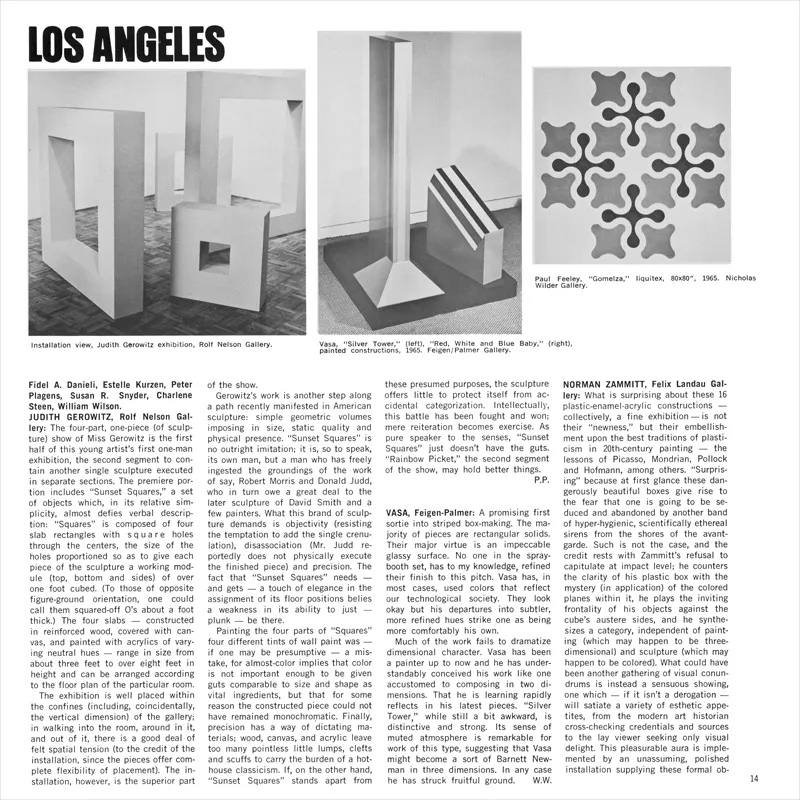March 1966

What is surprising about these 16 plastic-enamel-acrylic constructions––collectively, a fine exhibition––is not their “newness,” but their embellishment upon the best traditions of plasticism in 20th-century painting––the lessons of Picasso, Mondrian, Pollock and Hofmann, among others. “Surprising” because at first glance these dangerously beautiful boxes give rise to the fear that one is going to be seduced and abandoned by another band of hyper-hygienic, scientifically ethereal sirens from the shores of the avant-garde. Such is not the case, and the credit rests with Zammitt’s refusal to capitulate at impact level; he counters the clarity of his plastic box with the mystery (in application) of the colored planes within it, he plays the inviting frontality of his objects against the cube’s austere sides, and he synthesizes a category, independent of painting (which may happen to be three-dimensional) and sculpture (which may happen to be colored). What could have been another gathering of visual conundrums is instead a sensuous showing, one which––if it isn’t a derogation––will satiate a variety of esthetic appetites, from the modern art historian cross-checking credentials and sources to the lay viewer seeking only visual delight? This pleasurable aura is implemented by an unassuming, polished installation supplying these formal objects with an intimate, informal context which displays Zammitt’s inventiveness to advantage. (In the face of Zammitt’s neoterism, two minor irritants––stingy lighting and a couple of display shelves suspiciously resembling Danish Modern hi-fi components––are more annoying than they should be.)



